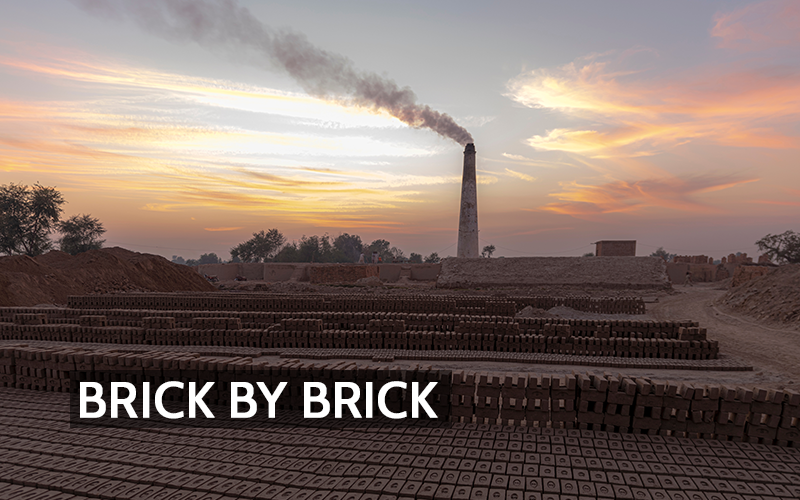Traditional brickmaking is a cornerstone of construction across South Asia, particularly in countries like India, Pakistan, and Bangladesh. Despite its economic significance, this industry poses substantial environmental challenges, notably contributing to severe air pollution and respiratory health risks.
Environmental Impacts of Traditional Brickmaking
The conventional brick kilns prevalent in South Asia, such as Fixed Chimney Bull’s Trench Kilns (FCBTKs), are notorious for their inefficiency and high emissions. These kilns burn low-grade coal and other materials, releasing large amounts of pollutants, including particulate matter (PM), sulfur dioxide (SO₂), carbon monoxide (CO), and black carbon. In Bangladesh, for instance, brick kilns are responsible for approximately 58% of the particulate pollution in Dhaka, the capital city1.
The environmental repercussions extend beyond air quality. The substantial consumption of coal and biomass fuels in brick kilns contributes to deforestation and increased greenhouse gas emissions, exacerbating climate change. Moreover, the extraction of clay for brick production often leads to land degradation and loss of agricultural productivity.
Health Implications
The pollutants emitted by traditional brick kilns have dire health consequences for nearby communities. Exposure to high levels of PM₂.₅—a fine particulate matter capable of penetrating deep into the lungs—has been linked to respiratory and cardiovascular diseases. In Bangladesh, air pollution from brick kilns results in over 6,000 premature adult deaths annually2. Similarly, in India, the brick kiln industry contributes to thousands of excess deaths each year due to pollution-related health issues.
Children are particularly vulnerable, with increased incidences of asthma and other respiratory conditions reported in areas with high brick kiln density. The health burden not only affects quality of life but also imposes economic strains due to increased healthcare costs and reduced labor productivity.
Socio-Economic Factors
The brickmaking industry is labor-intensive, providing employment to millions across South Asia. However, labor conditions are often poor, with workers exposed to hazardous environments without adequate protective measures. The prevalence of informal labor arrangements means that many workers lack access to healthcare and social security benefits, exacerbating their vulnerability.
Additionally, the industry frequently employs low-income and migrant workers, including children, who are subjected to exploitative practices. The combination of environmental degradation and poor labor conditions perpetuates cycles of poverty and ill health in these communities.
Mitigation Efforts and Challenges
Recognizing the environmental and health impacts, several initiatives have been undertaken to reform the brickmaking industry. Technological innovations, such as the introduction of more efficient kiln designs like the Zigzag kiln, have demonstrated the potential to reduce emissions by up to 80%3. These kilns improve combustion efficiency and lower fuel consumption, thereby decreasing pollutant output.
Policy measures have also been implemented, including stricter emission standards and the promotion of cleaner technologies. For example, the government of Pakistan has mandated the adoption of Zigzag kiln technology to curb pollution4. Similarly, in India, efforts are underway to regulate emissions from brick kilns and encourage the use of alternative materials and methods.
However, these efforts face significant challenges. The informal nature of the industry, coupled with limited financial resources among kiln owners, hampers the widespread adoption of cleaner technologies. Additionally, enforcement of regulations is often weak, and there is a lack of awareness about the benefits of modern kiln designs.
The traditional brickmaking industry in South Asia is at a critical juncture. While it remains a vital economic activity, its environmental and health costs are unsustainable. Addressing these challenges requires a complex approach, including technological innovation, stringent regulatory enforcement, and socio-economic reforms to protect workers and communities. Collaborative efforts between governments, non-governmental organizations, and industry stakeholders are essential to drive the transition towards more sustainable brick production practices.
Related Article:
The Future of Green Spaces and Trees in Cities: Challenges and Innovations
References:
- https://pulitzercenter.org/stories/bangladeshs-air-pollution-problem-grows-brick-brick
- https://www.tbsnews.net/bangladesh/environment/air-pollution-brick-kilns-causes-over-6000-premature-adult-deaths-bangladesh
- https://ballardbrief.byu.edu/issue-briefs/the-harmful-effects-of-living-in-brick-kiln-communities-in-the-south-asia-region
- https://www.dawn.com/news/1622334


